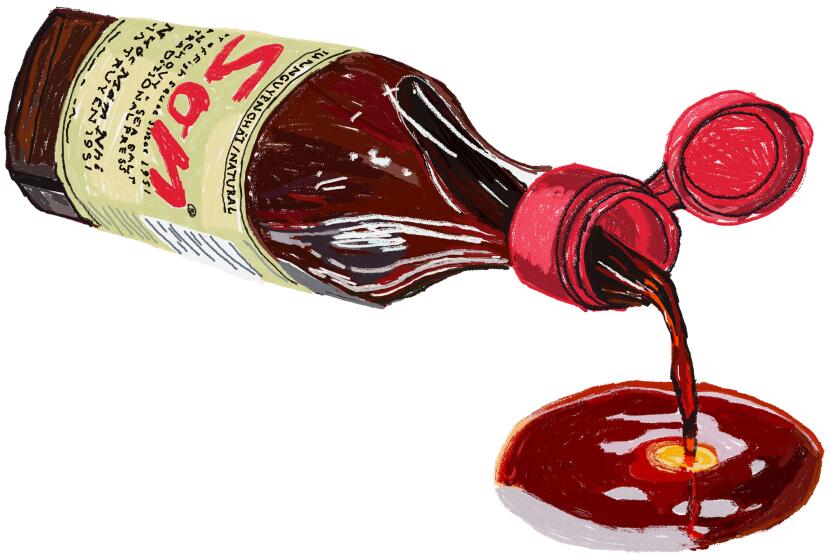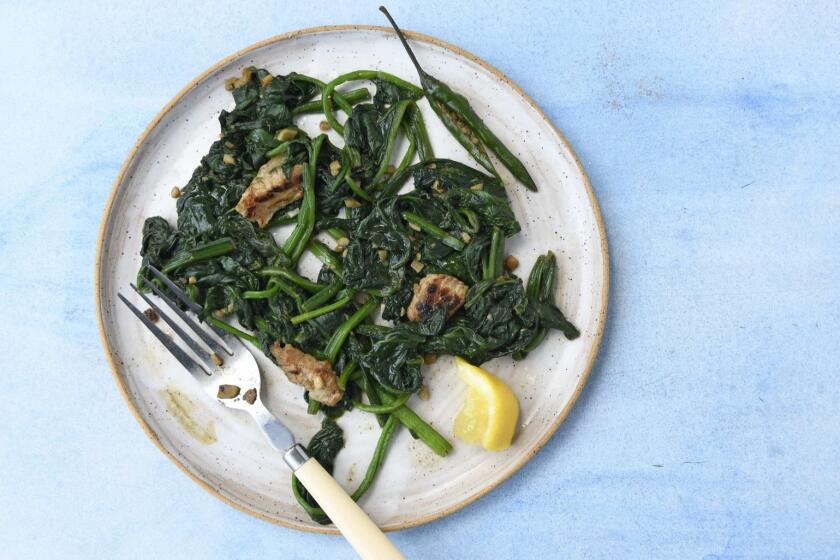What to look for when buying fish sauce
- Share via
“Straight from the barrel, it tasted rich and savory, not fishy,” my dad once recalled. “Drink a shot of the good stuff and you get a burst of energy.”
Whether or not you want to shoot it is up to you: Fish sauce smells strong (ideally, a strength like that of dried porcini) and the workhorse condiment is commonly combined with other ingredients to work its umami magic.
When my family escaped the communist takeover of Vietnam and settled in Southern California in 1975, we gained freedom but lost good fish sauce.
When shopping for nuoc mam, check the ingredients list if you’re gluten-sensitive. Some fish sauces contain sugar for a savory-sweet edge, while others may rely on monosodium glutamate as a flavor boost.
Pure fish sauce contains only fish and salt; no water or anchovy extract is listed among ingredients. Artisanal nuoc mam often names wild anchovies (ca com in Vietnamese) as the type of fish used. The high-grade liquid from the first extraction is called nuoc mam nhi (or nuoc mam cot) in Vietnamese. If shopping by N (nitrogen levels), 40N fish sauce is traditionally saved for dipping sauces and table use, but nowadays people use it for cooking too. To save money, use lower-N products for cooking.
Fish sauce has crossed over from Vietnamese cuisine to use in all kinds of home and restaurant cooking, but it’s hardly the only fermented sea beast potion that Viet cooks love.
Refrigerate fish sauce, especially those without preservatives, to maintain peak flavor; should it darken and intensify in flavor, use a little less than the amount suggested in a recipe. As with any condiment, try different brands to find one you like.
More to Read
Eat your way across L.A.
Get our weekly Tasting Notes newsletter for reviews, news and more.
You may occasionally receive promotional content from the Los Angeles Times.











